Vermont’s primarily forested landscape provides a fantastic habitat for many species, but most sparrows prefer scrubland, fields, prairies, or other open areas. The Green Mountain State’s Northwoods are still home to 15 main sparrow species at some point during the year.
Some are common birds that regularly breed in the state, some winter here, and others just pass through twice a year on their annual migrations. Let’s take a look.
Sparrow Species in Vermont
American Tree Sparrow
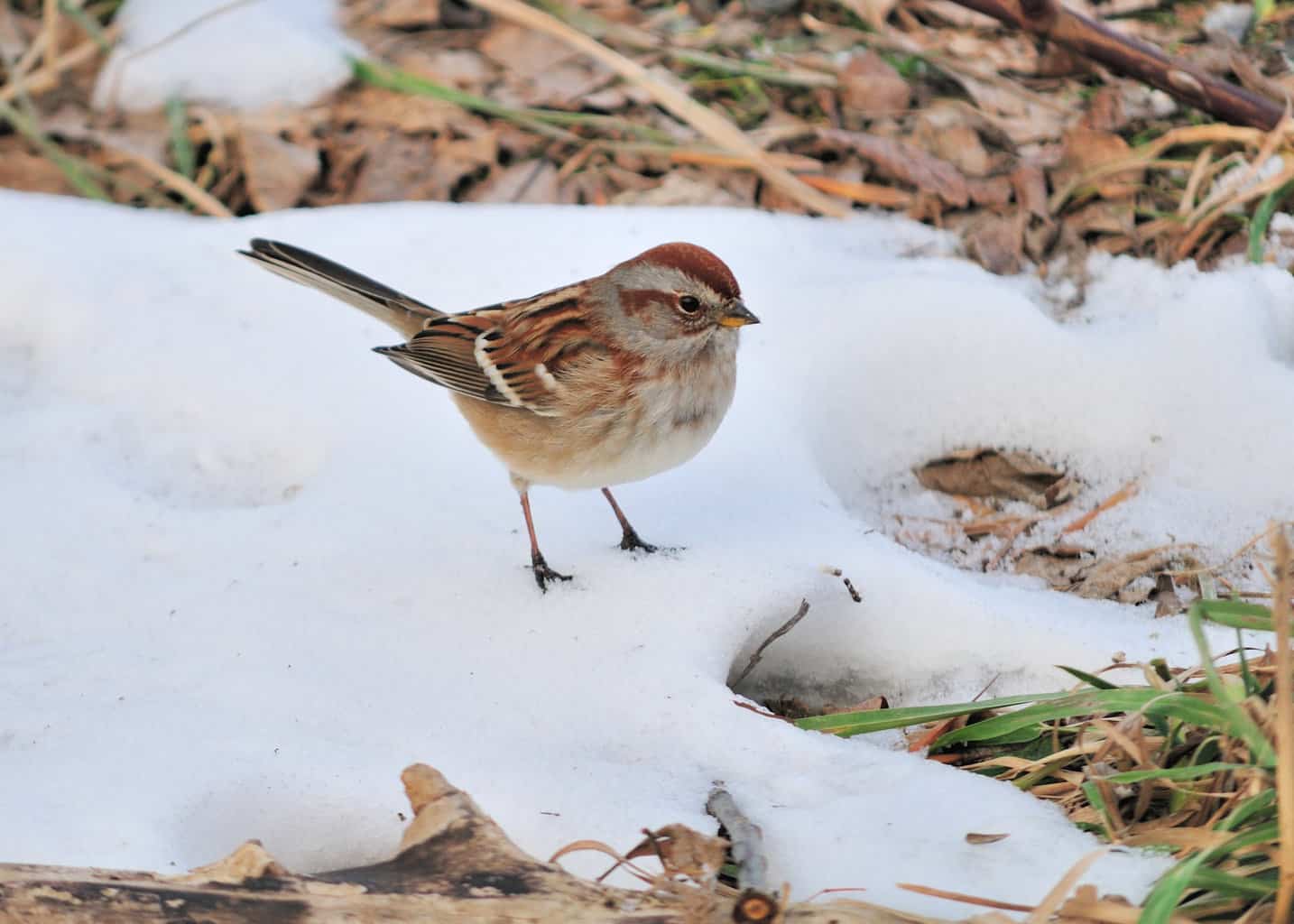
- Spizelloides arborea
- Length: 5.5 inches
- Weight: 0.5-1.0 ounces
- Wingspan: 9.4 inches
Our list begins with North America’s resident tree sparrow – at least in name. The American tree sparrow is misnamed, as it isn’t commonly seen in trees. And for Vermont and much of North America, it isn’t likely to be seen during breeding months.
American tree sparrows are beautiful little birds with cinnamon caps and lines behind each eye. Their small bills are split in color down the middle, with black on top and yellow on the bottom.
American tree sparrows breed in the northern reaches of Canada and Alaska, but their winter range reaches south into most of the continental U.S.
There are countless sightings of these popular birds in Vermont during the winter months in areas of scattered trees and brush, marshes, and thick fields. They may also visit backyard feeders in search of a variety of seeds to make it through the harsh northern winters.
Chipping Sparrow
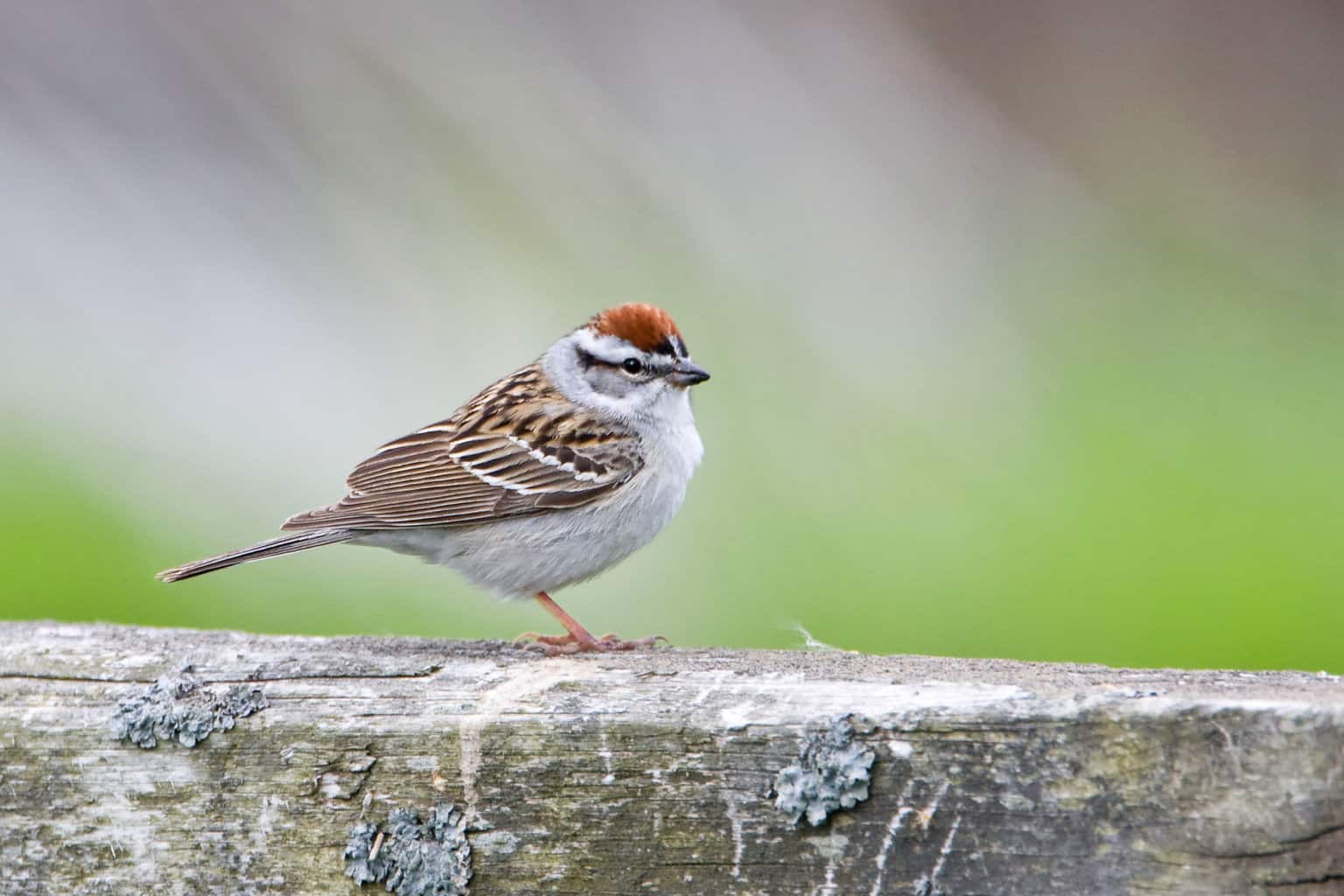
- Spizella passerina
- Length: 4.7-5.9 inches
- Weight: 0.4-0.6 ounces
- Wingspan: 8.3 inches
Chipping sparrows have similar rufous caps to the tree sparrow but with a black eyeline. Immature birds have a less sharply colored cap with the same dark eyeline. Both mature and immature birds have wide, unstreaked, gray bellies.
Most of North America is within the chipping sparrow’s breeding range before they head south to areas like Florida, Central America, and the Caribbean for the winter months.
Chipping sparrows are common in human-inhabited areas like backyards or public parks as well as forests and open areas.
They get their name from the chipping sound they make:
Field Sparrow
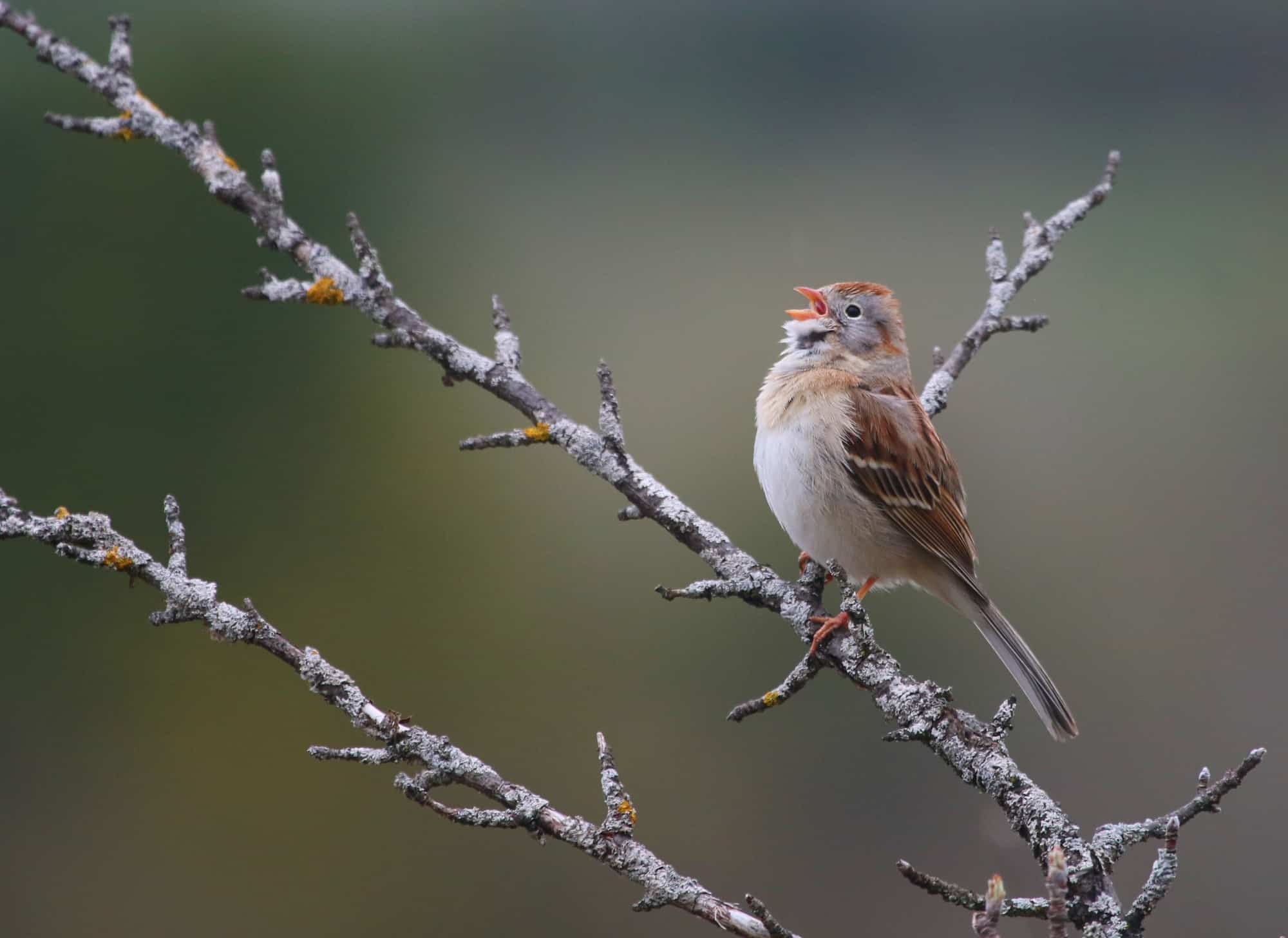
- Spizella pusilla
- Length: 4.7-5.9 inches
- Weight: 0.4-0.5 ounces
- Wingspan: 7.9 inches
Another common breeder in Vermont, the field sparrow also features a reddish cap and eyeline, but both are lighter in color than the cap on the chipping sparrow or tree sparrow.
Field sparrows have white eyerings with chests that range from mostly gray to gray with a rusty brown tint. Their faces are gray except for the cap and eyeline. Eastern field sparrows often feature more color than field sparrows in the Great Plains states.
They inhabit fields, as their name suggests, where their familiar song begins to ring out each spring. That song begins with a series of notes that speed up into a trill like a ball bouncing on the pavement.
Swamp Sparrow

- Melospiza georgiana
- Length: 4.7-5.9 inches
- Weight: 0.5-0.8 ounces
- Wingspan: 7.1-7.5 inches
A common resident of marshy areas, bogs, and wetlands, swamp sparrows are breeding residents across the Northeast.
They have rather dark coloring on their head, including head stripes and an eyeline. Their bicolored bills are darker on top and lighter below.
Swamp sparrows appeared in nine percent more blocks from the state’s first breeding bird atlas (1976-1981) to its second (2003-2007), according to the Vermont Center for Ecostudies.
The greatest increases came in Champlain Valley, Vermont Valley, and the Northeastern Highlands, though these sparrows are fairly common across the state.
Lincoln’s Sparrow

- Melospiza lincolnii
- Length: 5.1-5.9 inches
- Weight: 0.6-0.7 ounces
- Wingspan: 7.5-8.7 inches
Lincoln’s sparrows mainly breed in the Rocky Mountains and Canada, but their breeding range dips into Vermont at the northeastern borders, as well as a small part of the southern part of the state. People outside the breeding range also might catch a glimpse of one during their annual migrations.
They have darker cap streaks and fine dark lines, including down the upper chest, eyeline, and mustache markings.
Their bellies are light or white colored, but they may have some tan shading on the upper chest.
Between the state’s two breeding bird atlases, Lincoln’s sparrows saw a drop from 39 blocks of confirmed, probable, or possible breeding to 27, according to the Vermont Center for Ecostudies, which listed the maturation of forests near streamside willow thickets as a potential cause of the decrease.
Song Sparrow

- Melospiza melodia
- Length: 4.7-6.7 inches
- Weight: 0.4-1.9 ounces
- Wingspan: 7.1-9.4 ounces
Song sparrows are one of the most familiar birds for many birders across North America, where their songs bellow out from bushes and treetops everywhere besides the South and Great Plains regions.
They have russet or red-brown streaks that are typically visibly thicker than those of Lincoln’s sparrows.
They can be found in many different habitat types aside from thick forests, including marshy areas, agricultural fields and prairies, open parks, and backyards.
Fox Sparrow

- Passerella iliaca
- Length: 5.9-7.5 inches
- Weight: 0.9-1.6 ounces
- Wingspan: 10.5-11.4 inches
The title of blotchiest streaking in the North American sparrow world might belong to fox sparrows, brief migratory visitors in the state of Vermont.
Their splotchy streaks extend along their sides and their bellies are quite red in the eastern subspecies that could be spotted during the spring or fall in Vermont.
They’re rather large, with wings that are potentially several inches longer than most of the sparrows on the list so far.
Savannah Sparrow

- Passerculus sandwichensis
- Length: 4.3-5.9 inches
- Weight: 0.5-1.0 ounces
- Wingspan: 7.9-8.7 inches
Savannah sparrows are best known for their single yellow stripe over the eyebrow. They have a wide breeding range that includes nearly the entire Northeast.
Among the top locations to see them are the areas near the western border of Vermont, where they breed in marshes, grasslands, and agricultural areas.
In addition to its signature yellow marking, the Savannah sparrow has brown, segmented streaking down the upper chest and face and a white belly.
While they may live in grasslands and fields, their “Savannah” name is a nod to a specimen collected in Savannah, Georgia, according to All About Birds.
Grasshopper Sparrow
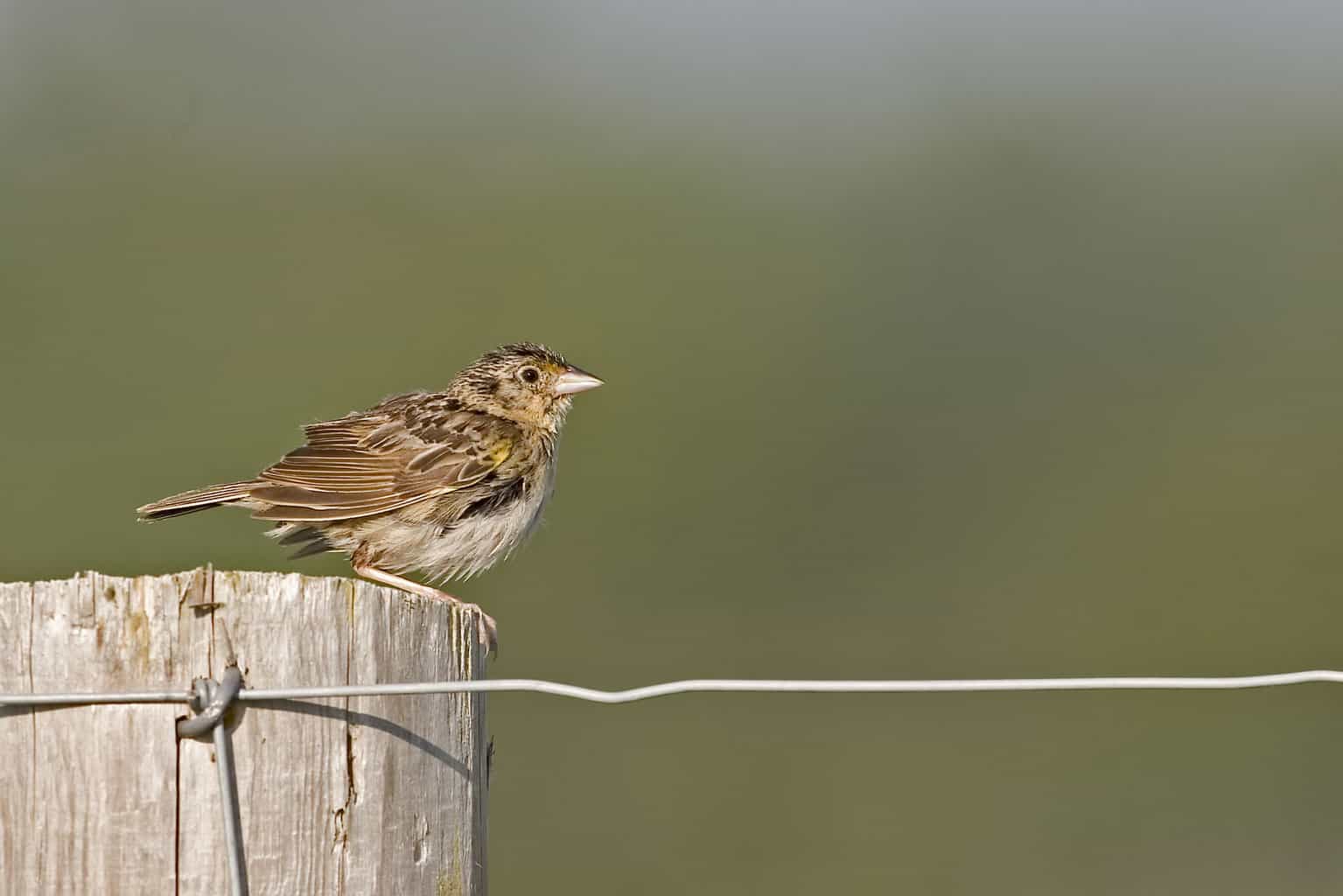
- Ammodramus savannarum
- Length: 4.3-4.5 inches
- Weight: 0.5-0.7 ounces
- Wingspan: 7.9 inches
Also featuring yellowing of the face, grasshopper sparrows are small sparrows that may breed in southern Vermont, although their numbers have undergone a serious decline across their breeding range.
From the state’s first breeding bird atlas to the second, the number of blocks with grasshopper sparrows decreased from four to one. This is an unfortunate result of decreasing and fragmenting grassland habitat, and it’s not unique to Vermont. The species’ population has dropped across their range by 68 percent since 1970, according to Partners in Flight.
Grasshopper sparrows are small sparrows with yellow front wing edges and potentially yellow-orange faces. Adults do not have streaking on the chest and belly, though they may have some darker coloring on the upper chest area.
Not only do grasshoppers and other insects comprise the majority of their diet, but they also sound a little bit like a bug:
Vesper Sparrow
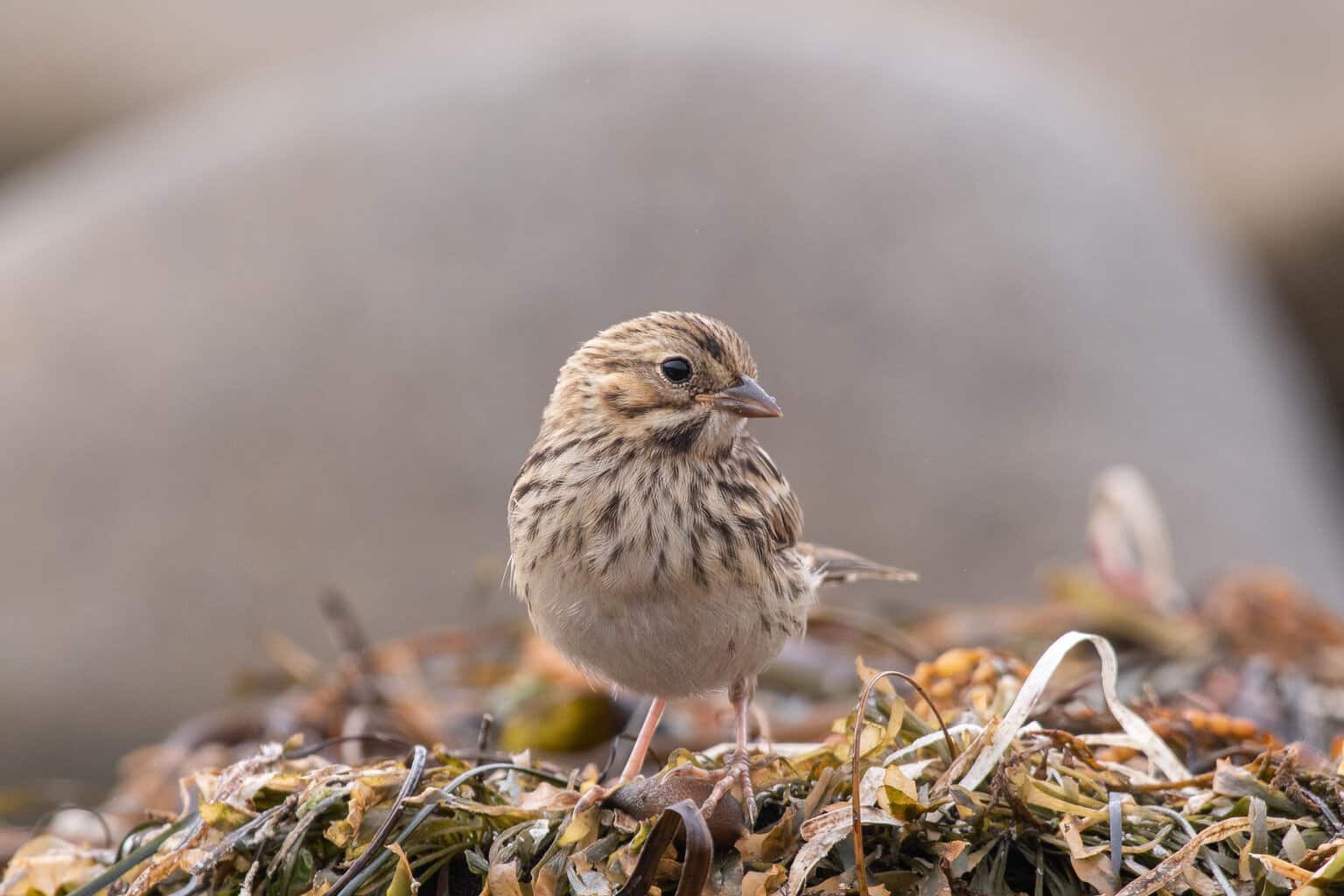
- Pooecetes gramineus
- Length: 5.1-6.3 inches
- Weight: 0.7-1.0 ounces
- Wingspan: 9.4 inches
Vesper sparrows are streaky sparrows that breed in northern and southern Vermont, and they’re another species of bird whose numbers have declined considerably in the past 60 years.
According to the North American Breeding Bird Survey, their populations dropped 37 percent from 1966 to 2014. In Vermont, their breeding block total dropped from 35 to 11, a drop of 69 percent, between the state’s first and second breeding bird atlases.
They are a bit larger than the average sparrow, with a wingspan of about nine inches. Their signature mark is a lighter brown patch on the shoulder of the wing, though it might be a bit difficult to pick that out from afar while wading through a grassland.
They also have brown streaking on the chest, though it ends about halfway down the bird’s underside. They have white eyerings and white outer tail feathers.
White-Crowned Sparrow
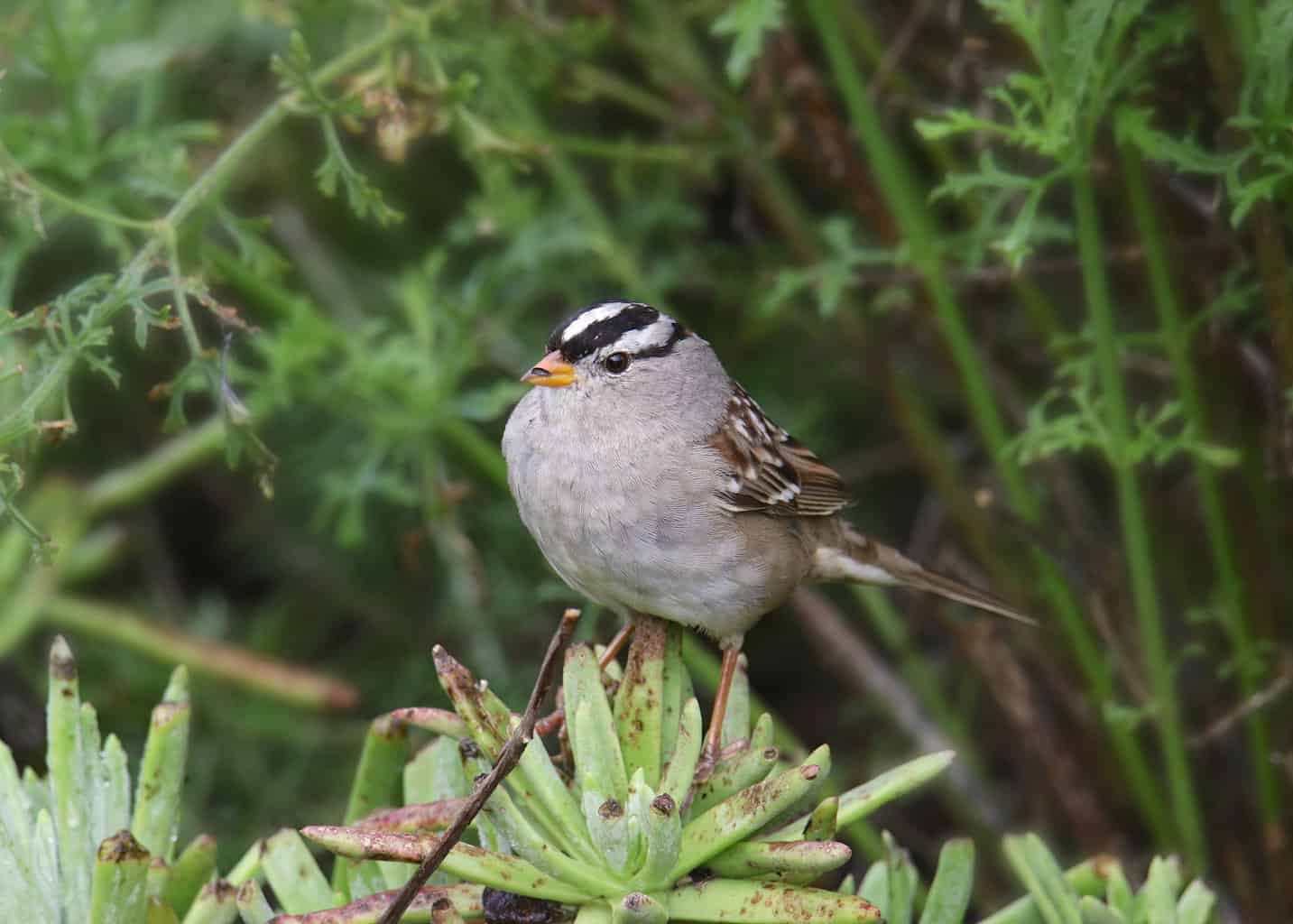
- Zonotrichia leucophrys
- Length: 5.9-6.3 inches
- Weight: 0.9-1.0 ounces
- Wingspan: 8.3-9.4 inches
By the time you start to realize you’re seeing white-crowned sparrows during their annual migrations, they’re probably getting ready to get on their way north for the summer or south for the winter. White-crowned sparrows winter further south than Vermont and breed further north.
They have a helmet of white and black stripes that starts at the eye and alternates in color over the cap until the black eyeline on the other side.
When they’re on their migration path, they may be seen in open areas like fields and backyards.
White-Throated Sparrow
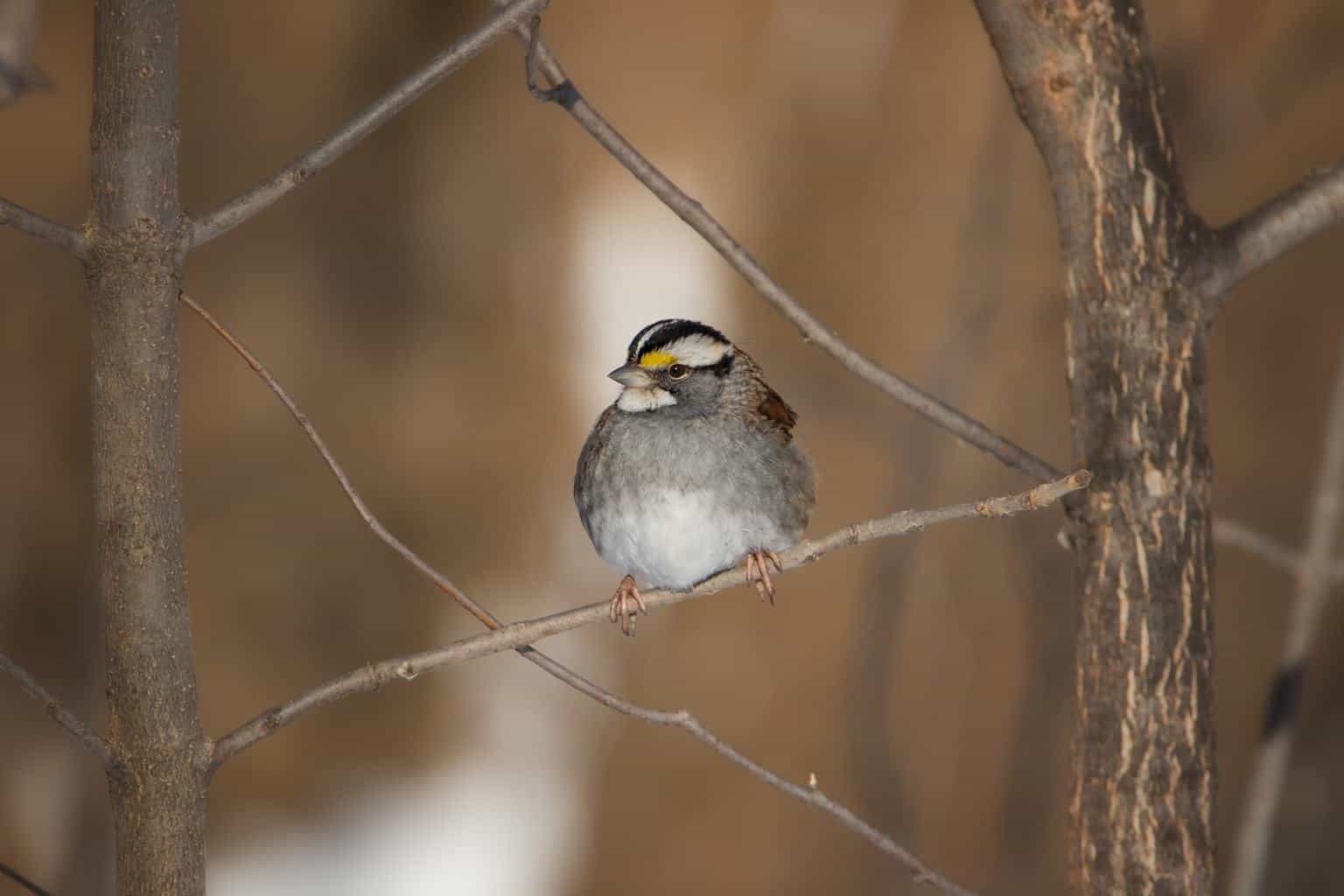
- Zonotrichia albicollis
- Length: 6.3-7.1 inches
- Weight: 0.8-1.1 ounces
- Wingspan: 7.9-9.1 inches
As its name suggests, this bird has a distinctive white throat patch like a fluffy goatee below the bill.
They also have a white and black head starting at the eyeline, as well as a thick golden eyebrow mark.
White-throated sparrows may stay year-round in the southern parts of the state. Northern Vermont is a breeding home for these pretty birds.
Their song is described as sounding like “O Sweet Canada,” via Merlin Bird ID, a fitting song given the vast majority of their range is in Canada.
Dark-Eyed Junco

- Junco hyemalis
- Length: 5.5-6.3 inches
- Weight: 0.6-1.1 ounces
- Wingspan: 7.1-9.8 inches
Speaking of Canada, the dark-eyed junco has a vast range across the Great White North, but they’re also year-round residents in Vermont.
Dark-eyed juncos have significant regional variations across North America–with most in the western half of the continent–but the most widespread is the slate-colored version. This is the subspecies in Vermont, with males displaying a signature white belly and underside of the tail and gray body everywhere else.
Females have tan and cream-colored bodies instead, but both sexes have black eyes and a light pink bill.
They’re common in forests, and people may see them bouncing around the ground at campsites, below feeders, and in fields.
Eastern Towhee

- Pipilo erythrophthalmus
- Length: 6.8-8.2 inches
- Weight: 1.1-1.8 ounces
- Wingspan: 7.9-11.0 inches
While they aren’t the only two towhee species in North America, the continent is nearly evenly split between the range of the eastern towhee and spotted towhee. The eastern towhee’s range includes much of Vermont except for the northeastern corner.
Male eastern towhees have black throats, heads, and backs, and their undersides are segmented into distinct areas of orange and white.
Females have a similar pattern but substitute the males’ jet black for a light chocolate brown.
Their breeding blocks in Vermont dropped from 115 to 54 between the state’s two breeding atlases, with the Vermont Center for Ecostudies listing farmland abandonment, forest maturation, and shrubland succession as reasons for the drop. More research in the northern edge of the species’ range is needed to determine area sensitivity, the center stated.
House Sparrow
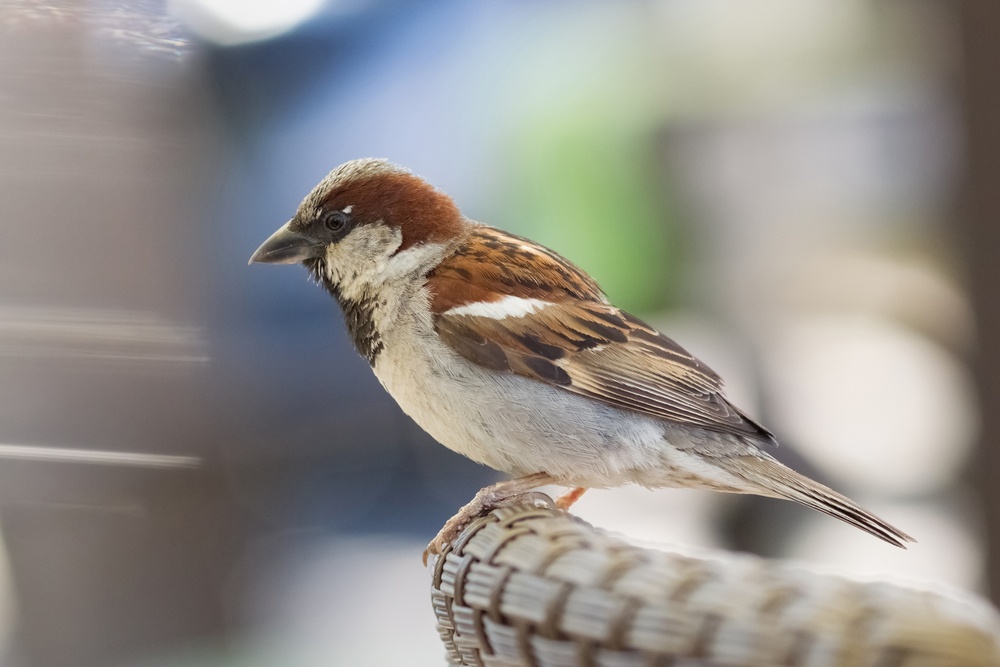
- Passer domesticus
- Length: 5.9-6.7 inches
- Weight: 0.9-1.1 ounces
- Wingspan: 7.5-9.8 inches
The last sparrow on our list also likely finds itself in last place for most sparrow popularity polls as a non-native “bully bird” with a penchant for displacing native species.
House sparrows are cavity nesters, so popular birds like bluebirds are direct competitors for resources like nesting spots. They’re adaptable in terms of habitat, which means they have been able to adjust to life in America’s biggest cities and sprawling suburbs.
Rare amongst North American sparrows are differences between males’ and females’ appearances, but house sparrows are the exception.
Breeding males have mostly gray chests, with black bibs and bills, gray caps, and a chestnut brown side of the face. Females look more like a standard sparrow with unmarked undersides and patterned backs. They have large bills with tan and brown colored faces.
More To Explore
Vermont is home to hundreds of birds. In fact, the Vermont Bird Checklist contains 395 different species, though some are rare vagrants.
Wild Bird Scoop has lists for many different types of birds in the state, including a list of some of the Green Mountain State’s favorites.
We also have lists of the state’s woodpeckers, hawks, owls, hummingbirds, and ducks to explore.

